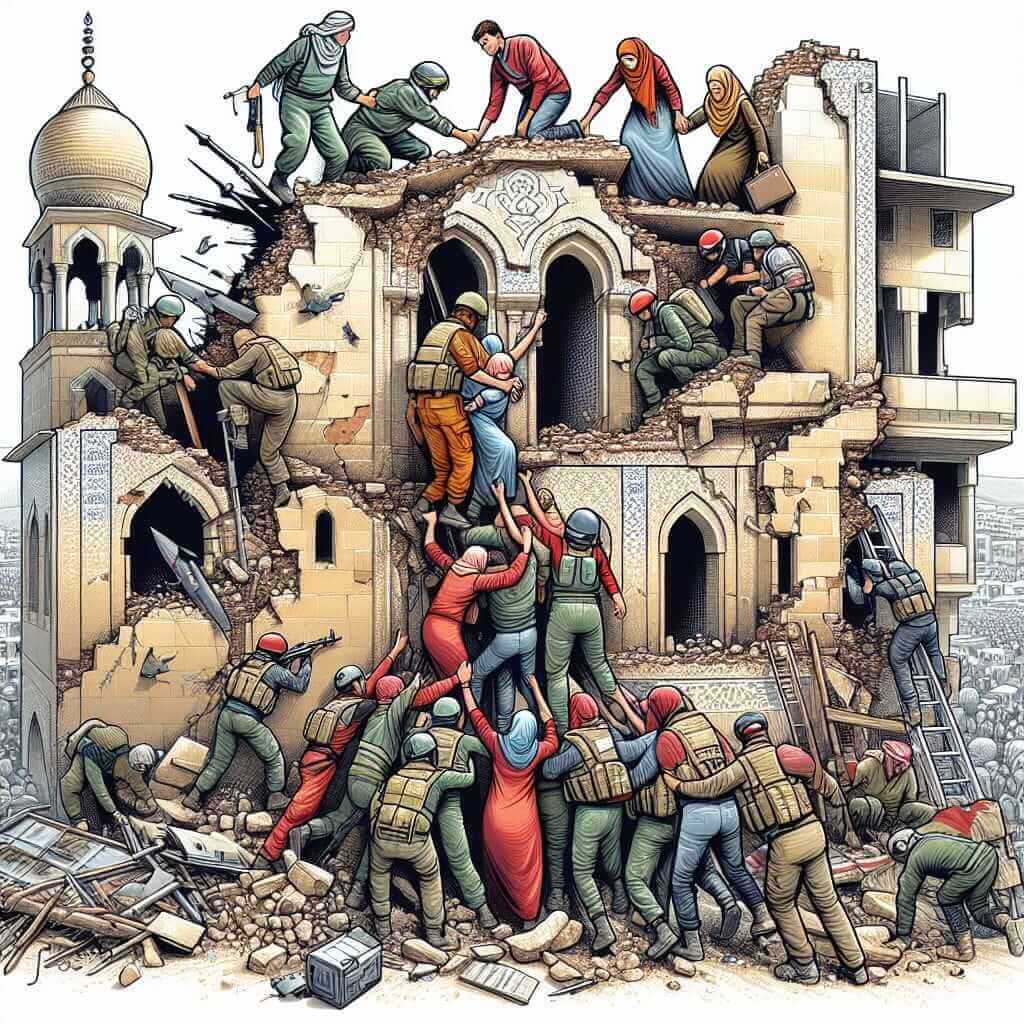The IELTS Reading test is one of the four key components of the IELTS exam. It assesses your ability to read and understand a variety of texts, often drawn from sources such as magazines, books, and newspapers. Topics can be broad-ranging and often include areas connected with current affairs. This article provides an in-depth look at one such pertinent topic: Cultural heritage preservation in conflict zones. This topic has appeared in various forms in the past and could likely re-emerge in future exams due to its ongoing relevance worldwide.
Cultural Heritage Preservation in Conflict Zones
In conflict zones around the world, cultural heritage sites and artifacts are often at risk of damage or destruction. These sites hold historical, aesthetic, and cultural value, making their preservation significant to maintain the continuity of human history and culture.
Historically, numerous conflicts have resulted in the loss of invaluable cultural heritage. During World War II, many European cities saw drastic damage to their historical landmarks. More recently, ongoing conflicts in the Middle East have posed severe threats to ancient monuments and cultural artifacts.
Efforts to preserve cultural heritage in these areas involve a combination of international collaboration, on-the-ground protection measures, and sometimes digital preservation techniques. Organizations such as UNESCO play crucial roles in these preservation initiatives, working to ensure that cultural heritage is safeguarded even amid conflict.
Reading Passage and Questions
Reading Passage
Here is a sample IELTS Reading passage about cultural heritage preservation in conflict zones. This passage falls into the “Medium Text” difficulty category.
Preserving Cultural Heritage in Conflict Zones
Preserving cultural heritage in conflict zones poses immense challenges. Cultural sites often become targets or collateral damage during warfare, resulting in their irreversible loss. However, the international community, along with local organizations, has been striving to create effective measures to safeguard these invaluable sites.
One significant approach has been the establishment of protective legislation that mandates the preservation of cultural heritage. UNESCO’s 1970 Convention on the Means of Prohibiting and Preventing the Illicit Import, Export and Transfer of Ownership of Cultural Property is a prime example. This law provides a framework for the protection of heritage items by preventing their illegal trade. Nonetheless, enforcing such laws in conflict zones remains arduous due to the lack of stable governance.
Another pivotal strategy is digital documentation. Advanced technologies, such as 3D scanning and satellite imaging, allow for the creation of detailed records of cultural sites and artifacts. Even if the physical site is destroyed, these digital records ensure that the information and cultural significance are not completely lost. Organizations like CyArk specialize in digitally documenting heritage sites globally, thereby providing a repository of shared human history.
On-the-ground interventions by local communities and international organizations also play a crucial role. These groups work in coordination to create and implement emergency plans for the protection of heritage sites during conflicts. For instance, the “Monuments Men” during World War II were instrumental in recovering and protecting numerous cultural artifacts from war-torn Europe.
Despite these efforts, the threat to cultural heritage in conflict zones persists. Continued global cooperation and innovative approaches are essential to safeguard these cultural treasures for future generations.
Questions
-
Multiple Choice
- 1.1 The main purpose of the UNESCO 1970 Convention is to:
- A) Create digital records of cultural sites.
- B) Prevent illegal trade of cultural property.
- C) Recover cultural artifacts from war zones.
- D) Train local communities in heritage preservation.
- 1.1 The main purpose of the UNESCO 1970 Convention is to:
-
Matching Information
-
2.1 Match each preservation strategy (A-D) with the correct information (i-iv):
-
A) Protective Legislation
-
B) Digital Documentation
-
C) On-the-ground Interventions
-
D) Global Cooperation
-
i) Efforts by local communities to safeguard sites during conflicts.
-
ii) Detailed records ensuring the cultural significance is not lost.
-
iii) International collaboration among various entities.
-
iv) Framework to prevent illegal trade of cultural items.
-
-
-
True/False/Not Given
- 3.1 The “Monuments Men” were part of local communities safeguarding artifacts during World War II.
- A) True
- B) False
- C) Not Given
- 3.1 The “Monuments Men” were part of local communities safeguarding artifacts during World War II.
-
Sentence Completion
- 4.1 The organization CyArk specializes in ____ digital documentation of heritage sites worldwide.
Answer Key
-
Multiple Choice
- 1.1 B) Prevent illegal trade of cultural property.
-
Matching Information
- 2.1
- A) iv) Framework to prevent illegal trade of cultural items.
- B) ii) Detailed records ensuring the cultural significance is not lost.
- C) i) Efforts by local communities to safeguard sites during conflicts.
- D) iii) International collaboration among various entities.
- 2.1
-
True/False/Not Given
- 3.1 B) False
-
Sentence Completion
- 4.1 specializes in creating detailed digital documentation of heritage sites worldwide.
Common Mistakes and Vocabulary
Common Mistakes
- Misinterpreting the context: Confusion often arises from ambiguous phrasing or lack of familiarity with the topic. Always read the sentences around the keyword to understand the context better.
- Overlooking specifics: Focusing solely on the general idea and missing out on crucial details can lead to incorrect answers.
Vocabulary
-
Illicit (adjective): /ɪˈlɪsɪt/ – Forbidden by law, rules, or custom.
- Example: The illicit trade of cultural artifacts is a significant issue in conflict zones.
-
Artifact (noun): /ˈɑːrtɪˌfækt/ – An object made by a human being, typically an item of cultural or historical interest.
- Example: Ancient artifacts are often at risk during wars.
-
Pivotal (adjective): /ˈpɪvətl/ – Of crucial importance in relation to the development or success of something.
- Example: The pivotal role of UNESCO in heritage preservation cannot be overstated.
Grammar
- Passive Voice: Often used to emphasize the action rather than who performed it.
- Example: “Cultural sites are preserved by international efforts.”
- Structure: [Subject] + [form of “to be”] + [past participle].
Tips for a High Score in IELTS Reading
- Skim and Scan: Quickly read through the passage to get the main idea and locate keywords.
- Understand Question Types: Familiarize yourself with different question formats and practice them regularly.
- Time Management: Don’t spend too much time on any one question. Move on and come back if necessary.
- Improve Vocabulary: A broad vocabulary helps in understanding the passage and answering questions accurately.
- Practice Regularly: Regular practice helps in building speed and accuracy.
 Cultural Heritage in Conflict Zone
Cultural Heritage in Conflict Zone
By understanding the nuances of preserving cultural heritage in conflict zones and practicing regularly with similar reading passages, you can improve your IELTS Reading skills and increase your chances of achieving a high score.


